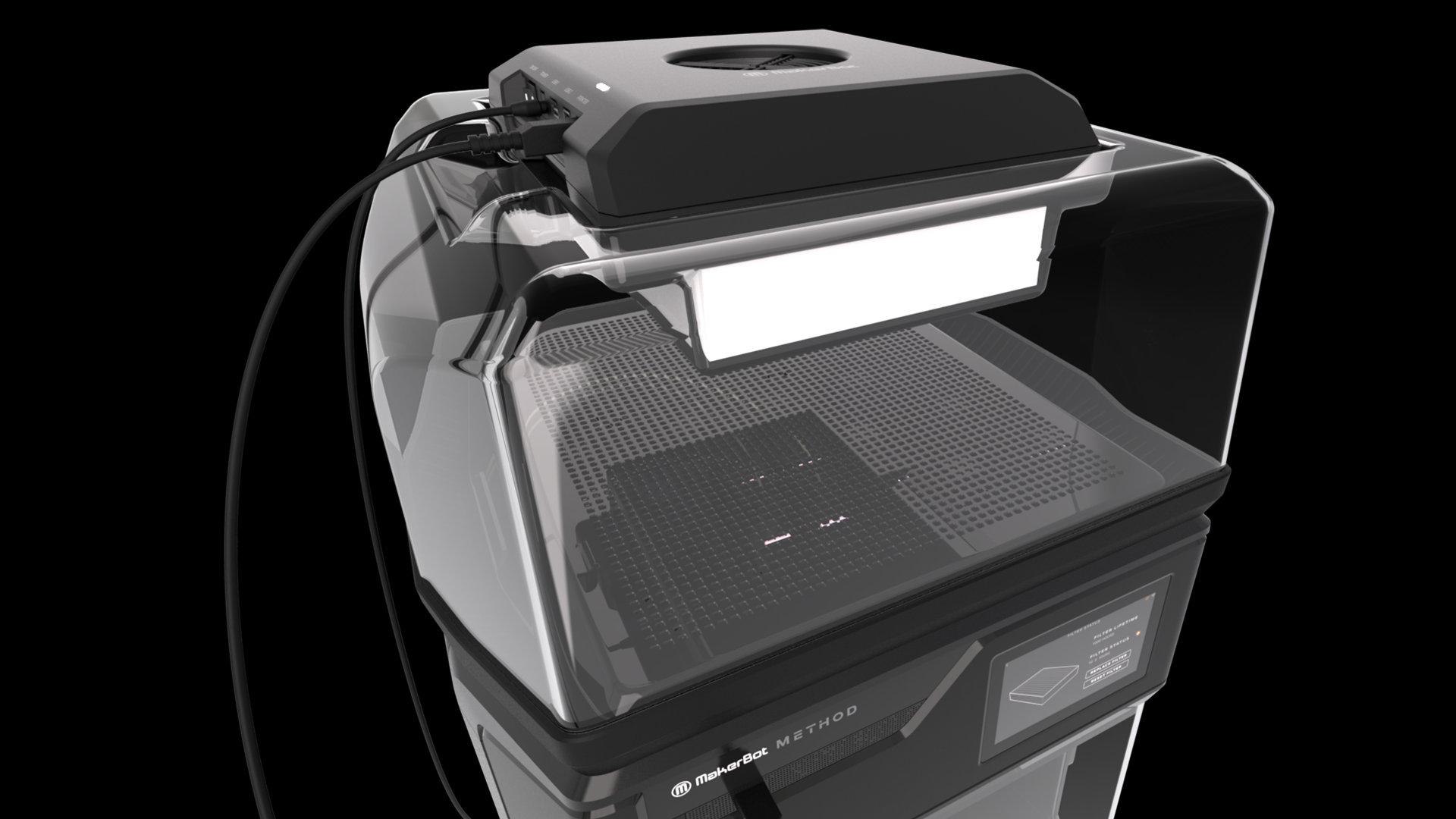The 3D printing industry has known for several years that desktop extrusion systems can produce some noxious byproducts, specifically volatile organic compounds (VOCs) and ultrafine particles (UFPs). However, manufacturers have been slow to rectify this issue, with only one so far achieving a GREENGUARD certification from UL. Stratasys subsidiary MakerBot has stepped up to the plate and developed its new Clean Air System for its METHOD and METHOD X 3D printers.
MakerBot’s prior attempts to maintain the safety necessary for office and educational environments relied on the use of PLA, a biopolymer that is much less toxic than engineering-related materials such as ABS and nylon. However, with its latest management shakeup, the company refocused once more and designed a completely new 3D printer from the ground up, the METHOD 3D printer, which offers professional-level features such as a heated bed, chamber and the ability to use a wide range of filaments.
Though the printer and the upgraded METHOD X are more capable than previous Replicator models, they had yet to offer the filtration that would make it a truly safe machine for spaces that may not always have the best ventilation. The MakerBot Clean Air System uses a HEPA filter to remove up to 95 percent of UFPs compared to 3D printing without it. The accessory is designed to integrate into the METHOD series in a seamless manner, with the HEPA lid controlled automatically and accounting for such variables as the ambient conditions, the temperature in the chamber, and the material being used.
The Clean Air System complements existing safety features such as enclosed build chambers that keep users from touching the extruder during printing. If the door is opened, the printer pauses. The newer SKETCH 3D printer from MakerBot also has a built-in particular filter for use in schools.
It’s great to see such a large manufacturer like MakerBot embrace filtration in its printers. As Executive Editor Joris Peels pointed out, air filter systems are necessary for desktop 3D printing to see widespread adoption. 3D printing is still a very new industry, particularly when it comes to the desktop segment. This gives us an opportunity to get ahead of issues that older industries failed to account for, such as environmentally hazardous work environments, carbon-intensive operations, the use of fossil fuel-based materials, unsustainable recycling regime, inequitable material sourcing, closed-source business practices, etc.
Of course, a new filter system isn’t as flashy as metal 3D printing filaments or specialty extruders, but it is important for user safety. And, with this new product, MakerBot has immediately placed itself ahead of most of its competitors, which do not offer filtering systems. It does come with a hefty price tag, however. At $899, businesses that don’t value safety might decide to skimp on the filter and instead use the money for other accessories. Or they might skip a MakerBot altogether and go for several Creality systems, depending on whether they prefer quality or value.
Subscribe to Our Email Newsletter
Stay up-to-date on all the latest news from the 3D printing industry and receive information and offers from third party vendors.
You May Also Like
Precision at the Microscale: UK Researchers Advance Medical Devices with BMF’s 3D Printing Tech
University of Nottingham researchers are using Boston Micro Fabrication‘s (BMF) 3D printing technology to develop medical devices that improve compatibility with human tissue. Funded by a UK grant, this project...
3D Printing Webinar and Event Roundup: April 21, 2024
It’s another busy week of webinars and events, starting with Hannover Messe in Germany and continuing with Metalcasting Congress, Chinaplas, TechBlick’s Innovation Festival, and more. Stratasys continues its advanced training...
3D Printing Webinar and Event Roundup: March 17, 2024
It’s another busy week of webinars and events, including SALMED 2024 and AM Forum in Berlin. Stratasys continues its in-person training and is offering two webinars, ASTM is holding a...
3D Printed Micro Antenna is 15% Smaller and 6X Lighter
Horizon Microtechnologies has achieved success in creating a high-frequency D-Band horn antenna through micro 3D printing. However, this achievement did not rely solely on 3D printing; it involved a combination...































